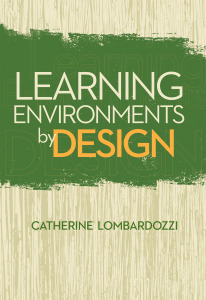A Conversation with Author Catherine Lombardozzi
The other day I caught up with Catherine Lombardozzi who is the principle behind the firm called Learning4Learning Professionals and author of a brand new book. Catherine has been in the field of learning and development for over 30 years doing all sorts of things from the basic to the complex–she has pretty much done it all. She dedicates her energies to supporting the development of people who consult, design, develop, and teach in corporate and academic settings. And she has recently penned a new book. You can follow Catherine on Twitter @L4LP. Here is part of our conversation.
Kapp: You’ve got a great new book out, can you tell me why you decided to write this book?
Lombardozzi: Thanks, Karl; I am really excited to see this book out in the world. In writing it, I wanted to share some ideas that have been useful to me in supporting learning in the digital age. It’s all good for thought leaders to encourage learning consultants and designers to support learning without always resorting to training, but people are somewhat flummoxed as to how to do that. Our current thinking on how to best support learning in organizations requires striking a balance between structuring learning and getting out of the way. Too much of one, and you’re stuck in a training paradigm. Too much of the other, and you are abandoning your learners to the vagaries of an internet search. Learning environment design, I think, strikes a balance between structure and freedom of choice for learners.
You can get the book from the ATD Web site. Or from Amazon.Learning Environments By Design
Kapp: You tackle a big concept in your book which is “how to integrate formal, informal, social, developmental, and experiential learning in a comprehensive strategy for building knowledge and skills.” Can you give us some ideas of the challenge of integrating these elements?
Lombardozzi: In the earlier part of my career, integrating all these strategies for learning meant that you designed a full scale intervention with all these customized pieces – company-specific training courses, resource materials, mentoring program, projects, etc. – all aligned as part of a comprehensive program. We now see it can be a waste of effort to customize all of that when we can leverage rich materials that are already in place.
But cobbling strategies together from various sources creates a different problem: they don’t always align perfectly. We may be able to trust that many learners will be able to figure out how all these learning opportunities can fit together – people have been doing that for themselves from birth, after all. But I also think that when learning professionals assemble a set of resources in a “learning environment” as described in my framework, they have the opportunity to contextualize and provide hints to help people to integrate these varied perspectives.
Kapp: Why is this integration process so key to today’s learning professionals?
Lombardozzi: We live in a fast-paced world with many possible distractions, and it is easy for people to miss the ways all of their learning strategies can come together to have an impact on knowledge and skill development. We can make a difference if we help learners to leverage the resources of the internet, to learn from and with their peers and social connections, and to translate their experiences into learning that carries forward. Organizing and scaffolding learning processes is incredibly valuable. It saves people a lot of time and effort in finding resources and figuring out how they are supposed to use them.
Kapp: I know you always choose to ground your work in a research-based perspective on how learning works. How did research in the field influence your thinking in the area of learning environments?
Lombardozzi: My doctoral research was on developmental relationships, so I’ve done a lot of reading of the research in the area of mentoring, peer development, and communities of practice. In today’s workplace development efforts, we are really playing up the social aspect of learning and I have found that my deeper understanding of the dynamics of social learning really helps me to identify opportunities, diagnose issues, and make recommendations. I try to give a little of that background in the book.
The other area I researched to inform the learning environment design framework was the arena of self-directed learning. When we open up resources and social networks and then “get out of the way,” we are essentially relying on a self-directed learning strategy. In the book, I share some of what research says is required to make that work.
Kapp: What advice could you give me students as they enter into the field of e-learning and instructional design?
Lombardozzi:Part of my advice goes back to your last question – I think it is very useful for professionals to gain grounding in the theory and research of our field which helps to explain what works and why. While it’s important to have technical skill and creative talents, our work is better when it also takes into account processes and characteristics that have been shown to improve outcomes. In addition, I believe that professionals in e-learning and instructional design need to broaden their areas of expertise beyond those two specific delivery modes and be ready to make recommendations regarding social learning, development practices, useful resources, and experiential learning as well.
Posted in: Out and About
Leave a Comment (0) ↓
